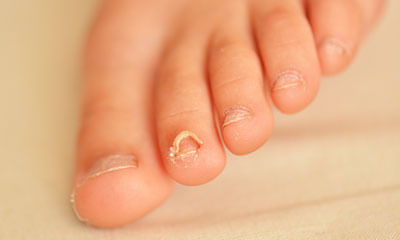Fungal Infection - Newer Problems And How To Deal With Them!
Q: how does resistance occur?
A: resistance occurs when the fungus adapts itself to the fungistatic/ fungicidal agent being used through some intrinsic genetic/ biochemical mechanisms.
1. Resistance to topical and systemic antifungals:
Q: when can we say that the patient has developed resistance to a particular agent?
A: in common practice, we can presume that the patient has become resistant to the topical/ systemic drug when after 2-4 weeks of consistent and correct use, there is no clinically apparent or symptomatic improvement.
In practice, it develops as a consequence of
• incorrect/ inconsistent use by the patient
• rampant abuse of antifungals by patient/ medical practitioners
• many over the counter preparations especially in india comprise a cocktail of unnecessary drugs, which modifies the growth of the fungus, causing it to temporarily cease its metabolic activity/ reproduction, but thereafter a resurgence occurs leading to undue and aggressive fungal growth.
• an infection with a drug-resistant species of fungus, in which case patient does not show the slightest sign of clinical improvement and it maybe advisable to consider doing a fungal culture/ sensitivity.
Q: how can resistance be prevented?
A: on the part of treating doctor:
- the dermatologist should always start prescribing from the basic/ lower antifungal molecule. Just as in case of antibiotics we start from azithromycin /amoxicillin, likewise we need to start from the lower molecule and then move up the ladder if we feel the former is not working, rather than directly prescribing the" latest molecule in the market.
- explain the correct usage of the drug to the patient in detail.
> Topical drug should to be applied 1cm beyond the visible margins of lesions
> Dusting powder is particularly advixsed in intertriginous areas
> Treatment regimens should last at least 1month for extensive lesions.
> Topicals should be applied at least 2 weeks beyond clinical resolution
> Follow-up is quite important
- impress upon the patient the need for correct usage/dangers of incorrect usage.
On part of the patient:
- strict adherence to the treatment regimen is advised
- non-usage of any other concurrent medications that he/she might have" used earlier" and" got relief"
- it is advisable to go to a dermatologist.
Q: once it occurs, how to deal with resistance?
A: the ideal solution in the management of resistance is to acquire a confirmation microbiologically. But in case that is not possible, following methods can be used:
- avoid monotherapy, that is, combine a topical and systemic antifungal concurrently
- both should preferably belong to different classes of drugs, so that if resistance occurs to one class of drugs, the other still works.
Prescribe soaps/ dusting powder for extensive lesions/ recurrent cases
- priscribing combination drugs should be avoided.
- if patient develops resistance while on systemic therapy, the patient should be asked to complete that regimen and then shift to a new drug rather than stopping the previous one mid way and starting another one abruptly.
Varied/ not so classical presentation of lesions:
- many a times, the varied/unpredictable presentations of superficial dermatomycosis pose a diagnostic challenge to the dermatologist
- unusual/atypical infections are particularly common in following settings:
• patients has been treated by multiple doctors previously, including non dermatologist
• use/abuse of over the counter drugs especially steriod containing medications
- differential diagnosis to be kept in the mind while considering a patient of tinea:
• granuloma annulare
• inverse psoriasis
• erythema annulare centrifugum
• contact dermatitis
• frictional dermatitis
• atopic dermatitis
• eczema
- diagnosis and management become a difficult task and one has to treat with great caution.
Recurrence/relapses despite completion of antifungal regimen/ complete compliance by patient:
What we should not do?
- prescribe yet another antifungal regimen
- add an oral antibiotic and continue both regimens for a longer time period (1 month instead of previously recommended 2 weeks)
- add a potent topical steroid to" counter the inflammation"
What we should do?
- check the compliance of the patient by taking a detailed history of usage of medications
- check for any underlying co-morbidities that might be predisposing the patient for recurrence, eg, rule out diabetes, obesity, type of occupation (involving working in hot humid conditions, like cooking, working in factories), any underlying immunosuppressed states
- check for personal habits (frequency of bathing and use of fresh clean clothes, practice of personal hygiene, patient's surroundings)
- check for family history of similar complaints and advice for concurrent treatment of other members if they have similar complaints
- check for any concurrent medications which might be causing reduced efficacy of the antifungal regimen due to potential drug interactions
- explain inter-personal transmission by fomites, advice patient to use separate towels, soaps, clothes
- educate and counsel patient to stop using over the counter medications for the" ring worm"
- advise patients to be particularly careful during the hot/humid summer/monsoon seasons as fungal infections are on the rise during the said time periods.



+1.svg)
